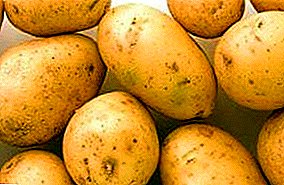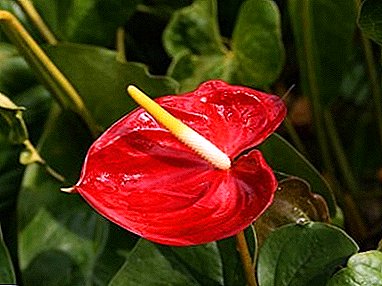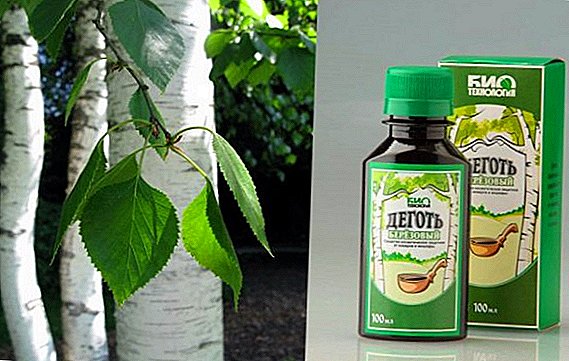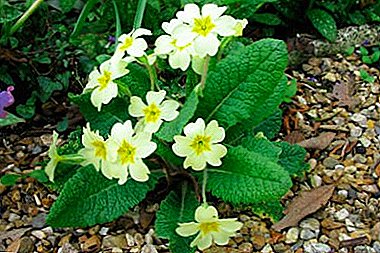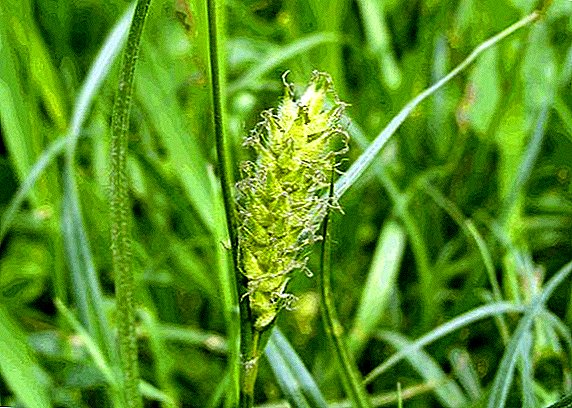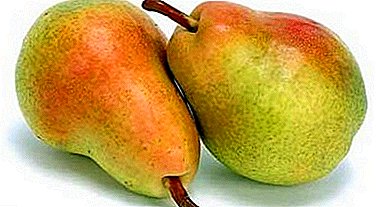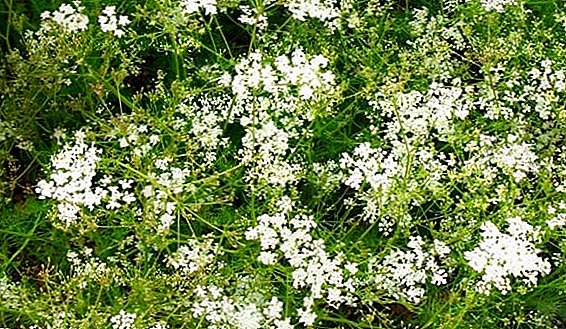 There are plants similar to each other like two drops of water. And in order not to confuse them, you should be well aware of how they look and how they differ. This unusual pair includes two common spices - dill and cumin.
There are plants similar to each other like two drops of water. And in order not to confuse them, you should be well aware of how they look and how they differ. This unusual pair includes two common spices - dill and cumin.
Description and features of plants
Despite all the similarity of plants, to distinguish them is quite simple. You just need to wait for the grass to bloom, and compare the color of their "umbrellas". Dill blooms yellow, and cumin - white or pinkish. But their fruits are very similar to their ribbed surface and elongated shape.
Caraway
Cumin is a plant of the Umbrella family, which is found in regions of Eurasia with a temperate climate and may be two years old or many years old.
Important! When buying cumin, you should choose whole, crumbly, clean and dry grains. Their aroma should be saturated and not have impurities.
Appearance of cumin:
- stem - dark green, smooth, 30-80 cm long;
- root - thick, cylindrical;
- leaves are thrice- or double-pinnate;
- flowers - bisexual or partially staminate;
- petals - round obovate, white, pink or red;
- fruits - oblong, with blunt ribs, slightly flattened;
- seeds - small, with aniseed aroma and taste (in 1 g 500-700 seeds).

Most often, cumin is grown to collect seeds that have a rich chemical composition:
- squirrels;
- fats;
- essential oils;
- resins;
- tannins;
- pigments.
Dill
Dill is an annual herb of the umbrella family, it is grown almost everywhere, it grows in nature in some regions of Asia.
Find out when and how to plant dill.
What a plant looks like:
- stem - dark green, smooth, without pubescence, 40-150 cm long;
- leaves are thrice-, four-leaved, dissected, egg-shaped;
- umbrellas - double, up to 15 cm in size, 20-50 rays each;
- flowers - combined in umbrellas in size 2-9 cm;
- petals - yellow;
- fruits - vislopodniki;
- seeds - in the form of an egg or a wide ellipse, length 3-5 mm, width 1.5-3.5 mm (in 1 g 600-800 seeds);
- smell - intense, specific, spicy.

The composition of the essential oil of the fruit:
- D-carvon;
- D-limonene;
- α-felllandren;
- α-pinene;
- dipentene;
- dihydrocarvone.
The chemical composition of leaves:
- vitamins C, B1, B2, B3, PP;
- carotene;
- flavonoids;
- carbohydrates;
- pectic substances;
- mineral salts.
Did you know? In the old days, in many regions, dill was often found in flower beds as an ornamental plant. And in ancient Rome and ancient Greece, men to their chosen ones often presented dill bouquets.
Properties of cumin and dill
Let's consider what benefits these spices can bring and whether there are contraindications to their use.
Benefit
Cumin and dill are widely used both in pharmacology for the production of medicines, and in traditional medicine.  1. Dill; 2. Cumin.
1. Dill; 2. Cumin.
Plants are useful for the following properties:
- fruits help to normalize the work of digestion, to improve the motility of the digestive tract, cope with flatulence, improve appetite;
- seeds have a good diuretic effect;
- herbal teas help to increase milk production by nursing moms;
- essential oils of the fruit have an expectorant effect, help the sputum to move away with diseases of the bronchi and lungs;
- infusions of seeds have a slight sedative effect, improve sleep;
- Greens help the metabolism, improve liver and kidney function, is used in dietary nutrition.
Possible harm
Even the most useful herbs should not be used uncontrollably. So, taking an excessive amount of dill seeds and cumin can lower blood pressure below the norm, resulting in a breakdown and even fainting can be observed. Therefore, people prone to low pressure should be wary of these spices.
Important! In the presence of serious and chronic ailments, all medicinal plants can be used only with the permission of the attending physician.
In addition, herbal abuse can trigger allergies and the formation of kidney stones. And the ability of dill to enhance the process of blood formation can harm during menstruation and pregnancy in women. 
Cumin seed and dill seed
Seeds are used in many dishes and preservation, in folk recipes, cosmetology and hygiene products. So, from dill seeds is prepared spicy oil for the needs of cooking and other industries. Also, their tincture is used inside as a remedy for hemorrhoids, and externally as a healing and soothes skin irritation. Spasmolytic and sedative preparations are prepared from dill seeds.
Many, for sure, faced with the fact that it was the "dill water" that helped the baby to get rid of colic and improve digestion. Extracts from fennel seeds are indispensable for the preparation of many perfume and cosmetic compositions - creams, colognes and toothpastes. Cumin seeds are also widely used in many recipes - for making soups and sauces, vegetable and meat dishes, baking baked goods. It is impossible to imagine the usual Borodino bread without fragrant cumin seeds on its top crust.
Did you know? Everyone knows that the winners of ancient sports competitions received wreaths of laurel as a reward. However, often in ancient Rome, champions were presented with a wreath from dill.
Caraway oil is found in medicine preparations, alcoholic and perfumery products. Caraway water is often used as a laxative and to improve the performance of the digestive system. It is used as a rubbing for cold symptoms, as a lactation enhancer and as a sedative. Cumin seeds help to cope with stomach and intestinal cramps and improve appetite. 
Recommendations for use
Dill is different in that it is more often used fresh. Fine-cut dill gives an appetizing flavor to the first dishes. Many salads, marinades, meat and fish dishes do not do without it. For pickling and pickling cucumbers, tomatoes and cabbage, dill is used, collected during flowering. Phytoncides contained in the seasoning help keep the preservation longer and protect it from the appearance of mold.
A fresh umbrella of dill in the Ukrainian borscht is an indispensable final touch of this dish. Dill is also harvested and stored in dry or salted form. It is used alone or with other herbs and successfully "opens" in a dish, giving off its unique flavor. Cumin is more often used in dry form. Its seeds and leaves can also be found in many dishes, baked goods, sauces and canned vegetables.
Read also about how useful cumin.
The young leaves of cumin are often added to salads to saturate them with vitamins and impart a special flavor. Thus, although there is some difference between cumin and dill, their properties are very similar. Eating these herbs will add valuable micronutrients to your diet, as well as help to improve many organs and body systems. And their flavor will make any food fragrant and tasty.


